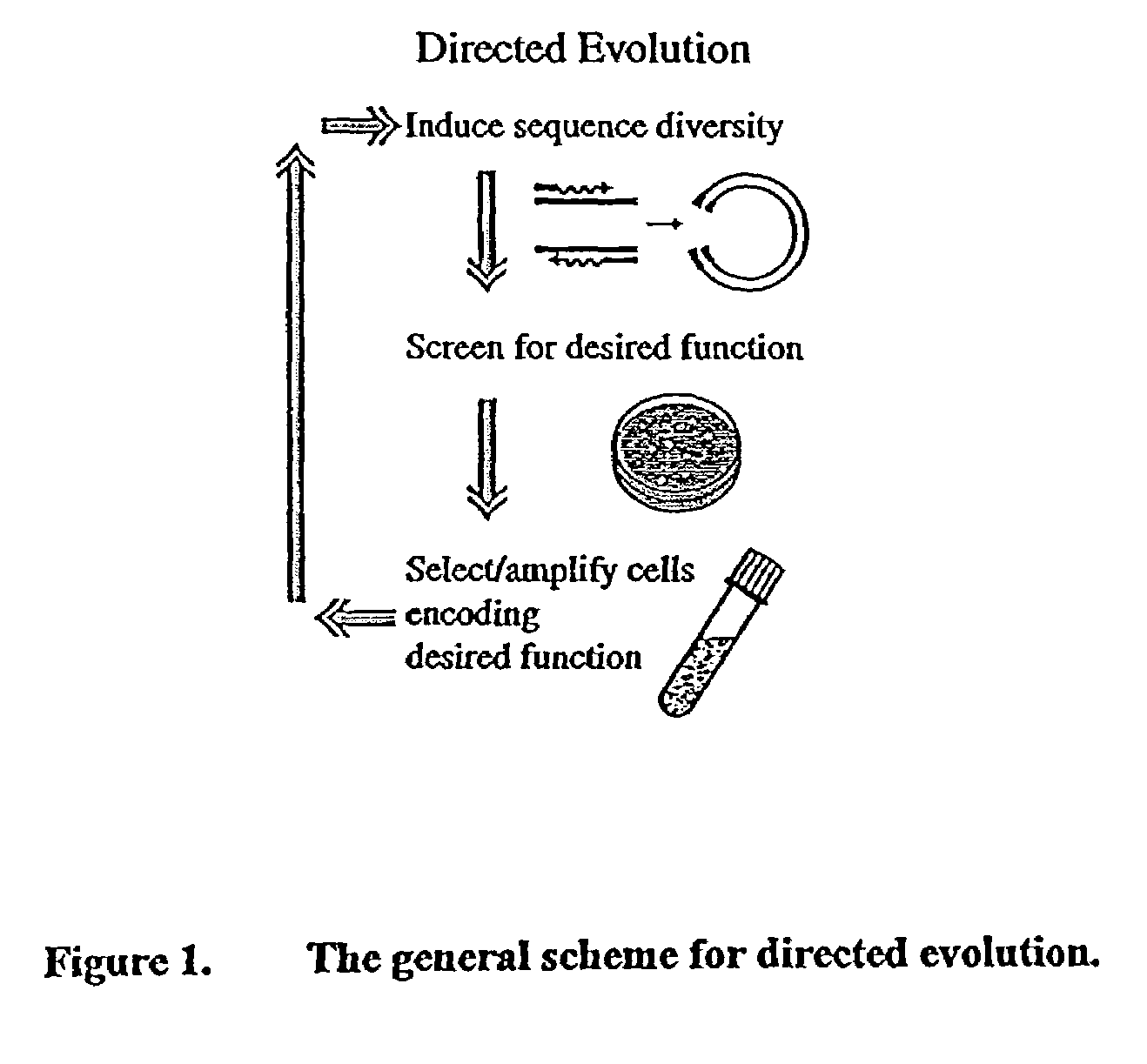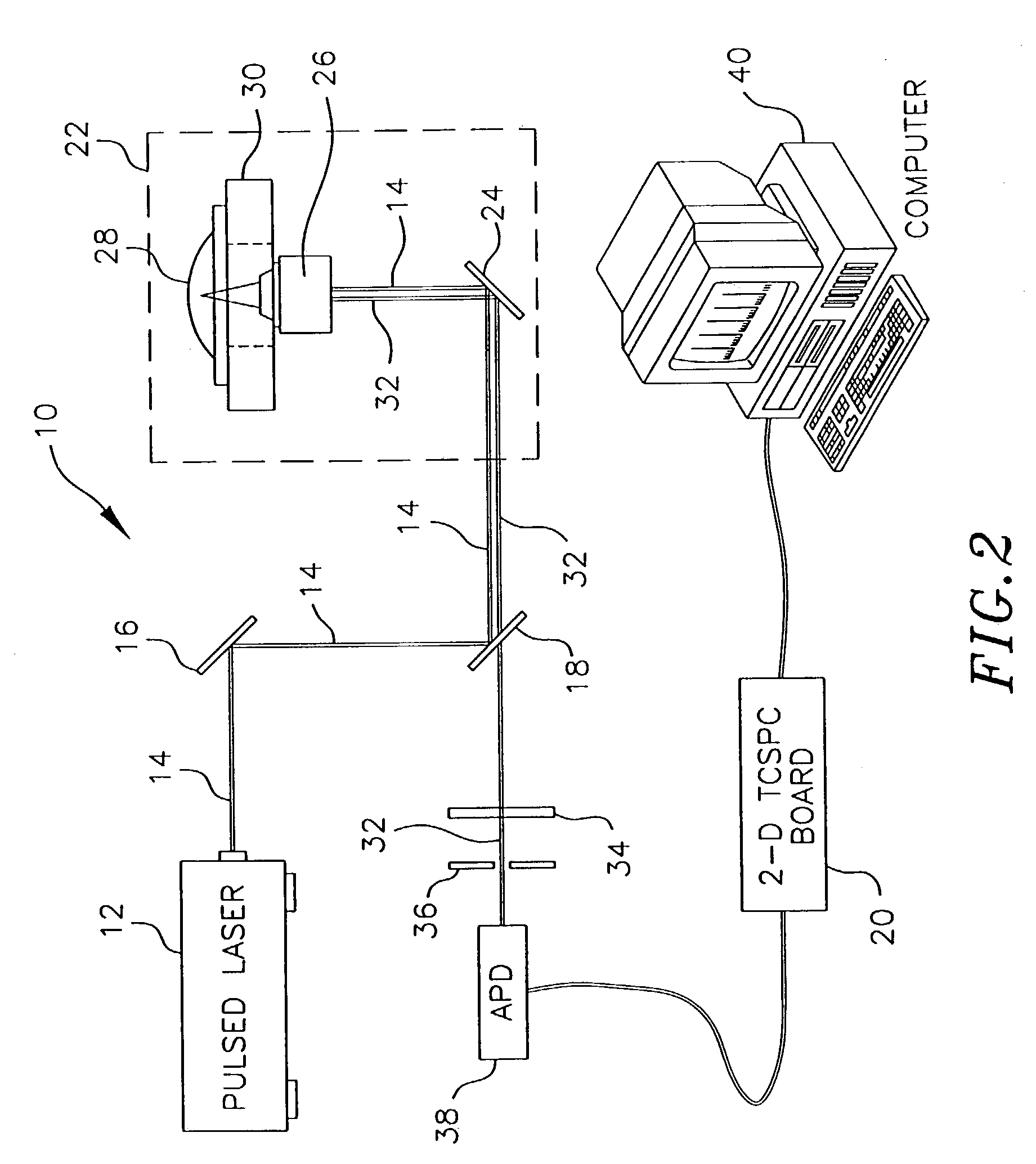Computer interfaced scanning fluorescence lifetime microscope applied to directed evolution
a lifetime microscope and scanning fluorescence technology, applied in fluorescence/phosphorescence, optical radiation measurement, spectrophotometry/monochromators, etc., can solve the problems of slow visual screening process, not particularly amenable to automation, and greatly limited number of cells that can be screened and selected for further processing
- Summary
- Abstract
- Description
- Claims
- Application Information
AI Technical Summary
Benefits of technology
Problems solved by technology
Method used
Image
Examples
example 1
Time Correlated Fluorescent Signals from Individual E. coli Expressing Red Fluorescent Protein
[0101]FIG. 8 shows time correlated data taken on a single cell of E. coli expressing red fluorescent protein (RFP) from the dsRED plasmid, available commercially from ClonTech Laboratories, Inc. (Palo Alto, Calif.). The trace was taken using an apparatus similar to the one shown in FIG. 2, but using a sample suspended in solution rather than on a solid substrate.
[0102]Specifically, a frequency doubled, pulse compressed, and mode locked Nd:YAG laser (532 nm, 10 psec) was used to excite the sample at a repetition rate of 82 MHz. To ensure proper beam quality and polarization, the light was passed through a single mode, polarization preserving glass fiber (F-SPA, Newport, Irvine, Calif.) and a polarizing beam splitter (05BC15PH.3, Newport, Irvine, Calif.). The laser light was delivered into an inverted, confocal microscope and reflected up towards the microscope objective with a dichroic mirro...
example 2
Light-Mediated Patterning in Cell Selection
[0107]The cationic porphyrin 5,10,15,20-Tetrakis [4-(trimethylammonio)phenyl]-21H,23H-porphine (TmaP), which has a maximum absorption at 412 nm wavelength, was added to a 3 mL liquid culture of E. coli in Luria Broth (LB) and the culture was incubated in the dark overnight. Approximately 50 uL of the culture was plated on an LB / TmaP agar plate, and portions of the plate was irradiated for about 2 minutes with visible light passed through a blue filter. The cells were then placed in an incubator and allowed to grow overnight at 37° C.
[0108]The image projected onto the plate is shown in FIG. 9A. As shown in FIG. 9B, those portions of the plate receiving visible light (the “white” portion of the image shown in FIG. 9A) show little or no growth. of E. coli, while portions of the plate receiving little or no visible light (the “black” portion of the image shown in FIG. 9A) show high density growth in the form of the Arizona State University masc...
PUM
| Property | Measurement | Unit |
|---|---|---|
| diameter | aaaaa | aaaaa |
| frequency | aaaaa | aaaaa |
| diameter | aaaaa | aaaaa |
Abstract
Description
Claims
Application Information
 Login to View More
Login to View More - R&D
- Intellectual Property
- Life Sciences
- Materials
- Tech Scout
- Unparalleled Data Quality
- Higher Quality Content
- 60% Fewer Hallucinations
Browse by: Latest US Patents, China's latest patents, Technical Efficacy Thesaurus, Application Domain, Technology Topic, Popular Technical Reports.
© 2025 PatSnap. All rights reserved.Legal|Privacy policy|Modern Slavery Act Transparency Statement|Sitemap|About US| Contact US: help@patsnap.com



